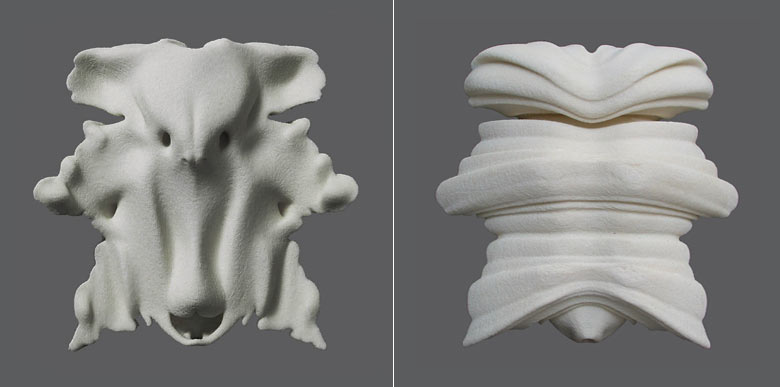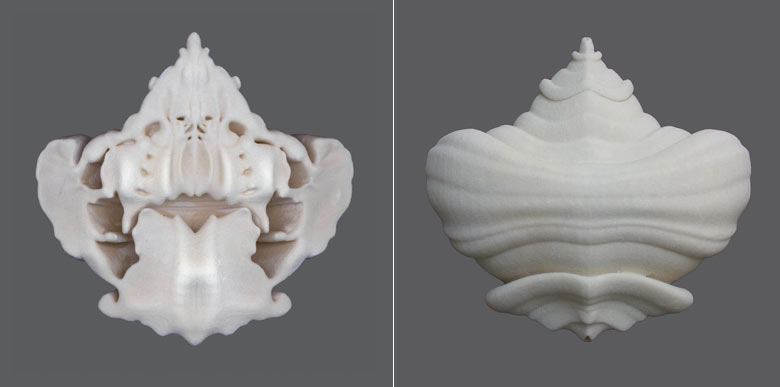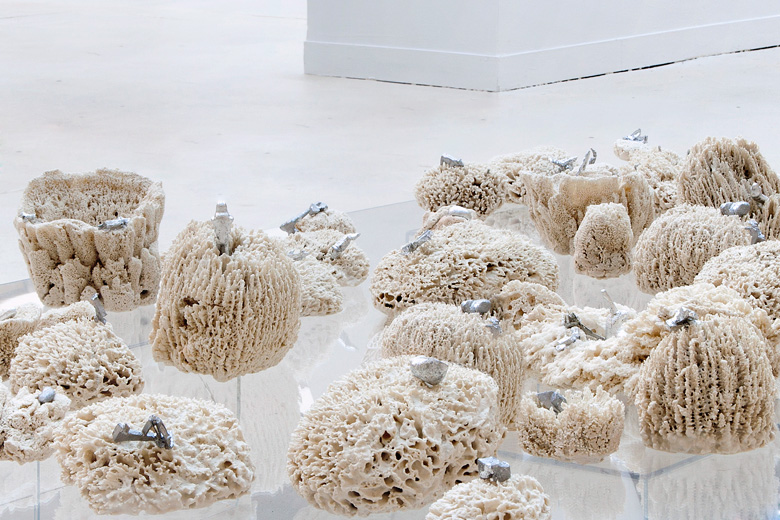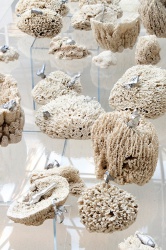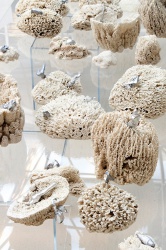The Brain – is wider than the Sky-
For – put them side by side-
The one the other will contain
With ease – and You- beside-
The Brain is deeper than the sea-
For – hold them – Blue to Blue –
The one the other will absorb –
As Sponges – Buckets – do –
The Brain is just the weight of God –
For – Heft them – Pound for Pound –
And they will differ – if they do –
As Syllable from Sound-
Emily Dickinson
Putting aside Plato’s banishment of poetry as imitation, a falsity, a mere shadow of reality, poetry’s praise has circumnavigated both Eastern and Western thought for myriad millennia. If poetry were essentially composed of rhymes and schemes, what questions are dramatically posed by its continuing and multifarious presence? Does poetry with its metaphorical structures reveal something about our cognitive/emotional sphere? Can it be assumed that human consciousness is embedded in symbolic mapping, the same kind of tropes manifest in the poetic? How intrinsic is this literary device of language’s shorthand to human thought itself? For philosopher George Lakoff, representations are neurologically bound to human’s metaphorical structures1]. Lakoff poses the following question:”Have you ever asked why conceptual metaphor exists at all, why we should think metaphorically, why metaphors should take the form of cross-domain mapping?”2 For psychiatrist Arnold Modell, metaphor is “a mode of cognition, that is doubly embodied: First as an unconscious neural process and second, that metaphors are generated from bodily feelings, so that it is possible to think of the corporeal imagination”3. Both of these scholars venture well beyond metaphor’s associative powers or rhetorical sensibilities. They affirm that such cognitive action is neuronally bounded and operates as an underlying interwoven matrix supporting human thought.
By way of coded messages, which stimulate and charge every aspect of our bodies and their functions, nervous systems are constituted of nodes. At times, such nodes imbued with plasticity, function in separate groups. Recent interests in “mirror” neurons, -that is,neurons which fire, even in fictive situations-, criss-cross lines between imaginative thought and falsification. Consider a perception of an object, a stunning configuration of quail eggs, caviar and salmon roe layered on tiers of green onions and slices of goat cheese. Shape, color, texture, scale and even projected taste are coded within separate domains of the brain. As a relay system of immensely swift firing neurons, our perception fails to recognize these informational fragments separately. Instead they are comprehended as freewheeling flowing streams. Like a stop-action camera on automatic pilot, such wired arrays transcend ordinary awareness.
The central question is: do pictures produce mental, associative connections that can be employed as an expanded field of consciousness including memory? How do pictures invoke thought? Picture science is a developing field, which examines visual images and their surrounding ideologies, myths, and social considerations. Early examples portray the variety of historical map-making and the nature of their representational spaces. As novel information is gathered to affirm or deny the existence of a land mass or lake or coastline, these pictorial representations are adjusted, calling into question the necessity of revisioned thinking
4. Whereas the earth was once considered flat, it is now depicted as shifting tectonic plates. While the earth itself has not been entirely reconfigured, its schemas have taken on a progression of pictorializations. No single image drives this point home more aptly than the first photo of earth taken from outer space. Geography, geometry, scale, color etc. constitute the profound manner in which formal systems alter semiotic analysis and how neurological processes respond.
5
Thought Forms and Belief
Significant advances in imaging technologies have entered the domain of visualization with unprecedented configurations representing the material world. Add to this distillation the aspect of deciphering images, thus we embark, once again, on the ways interpretation is grounded in aesthetics, art history, image science, and cognitive and computer sciences. Neither divorced from, nor operating within clear-cut discourses, questions concerning illusions, perceptions and sensations, are an essential part of the epistemological underpinnings of the methods in which images function. Picturing practices in both science and art have become part of a larger philosophical debate about visual phenomena.
What constitutes the visual world and its interpretations? Is the visual a discrete sense or does such a concept require additional analysis? From “seeing is believing” to “smoking out hoaxes” to optical illusions, hallucination and even connoisseurship, new imaging technologies are at once expanding the field of sight and revisiting philosophical issues in perception and phenomenology. In a recent text “There Are No Visual Media”, W.J.T. Mitchell describes how visual media are “intrinsically braided and nested in “the sensory ratio of vision and other senses.” The “sensory ratio of vision becomes even more complicated when it enters into the region of emotion, affect and intersubjective encounters in the visual field.” For Mitchell and other critics of the “purely optical” mediums of visualization, images also embed “habits, social spaces, institutions and markets” 6.
With the rapid rise of new imaging technologies in the 19th century a concomitant cultural discourse emerges. In “quests for the invisible”, thought-forms and spirit photography became mystical platforms in which the enhanced eye discovers what other dimensions of visualization are possible. The psychological and astral, the microscopic and telescopic revealed dimensions of color and form into the speculative domain of the spiritual. The rise of an ideological aesthetic discourse fostering Modernism pervades this terrain, releasing subjectivity that was both optical and phenomenological.
Popularized by advances in X-ray technologies, ideas addressing thought-forms emerge. By rendering the body transparent, it was speculated that thoughts could be manifestly visible. An1896 illustration appearing in Literary Digest, silhouetted heads portrayed in black and white high contrast formats expose interiors of those pictured7. As an ironic statement about character traits, the viewer becomes privy to the thoughts and personalities of persons graphically displayed. Gazing into the mind has always been a fascination for scientists and the public alike. This enchantment continues presently, particularly with the popularization of new imaging devices.
fMRI and a New Century of Images
Functional magnetic resonance (fMRI) is an imaging device employed to detect brain activity8. It can be employed writes Hannah Devlin, “to produce activation maps to show which parts of the brain are involved in mental processes.” It is a non-invasive procedure that can be performed on patients to measure blood flow to specific regions of the brain, particularly while engaging in an activity such as seeing, hearing, or smelling among others. Researchers have speculated that “measuring the oxygen-rich hemoglobin in the blood are a reflection of electrons becoming active in response to a patient’s task” writes Kerri Smith, editor of the Nature Podcast. However, he queries, “what is this technique in fact measuring?” Skepticism and speculation are the flip sides to the accumulating number of research articles published with regard to the clinical findings produced by fMRI scans.9 Recent history has shown that public policy decisions founded on burgeoning technological advances in science can have profound negative consequences. Are we revisiting an era of neo-phrenology, techno-reductionism or Evangelistic eugenics? Can we tell if a person is lying or wishing, or experiencing an erotic episode by reviewing his fMRI? Can we determine what his political or religious affiliation is or whether he loves music? Can we assume he is a danger to himself and society? Can we ascertain anything about his past and future behavior? What do in fact do these images tell us? When and how is image analysis supported by culturally embedded or self-serving narratives? Pressure from within both the scientific establishment and art worlds-at-large protect the viability of economic value systems and promote vainglorious historical, cultural data as an anchor powering their institutional relations. In Big Science and Big Art, rhetorical aggrandizement can operate on flawed logic and openly deceitful practice. Perhaps this is another attribute currently binding these two domains.
The Science Debates
Akin to the frenzy driving the mapping of the Human Genome Project in past twenty years, neuroscience has upped the ante confronting Big Science. The Human Connectome Project (HCP) funded by the National Institutes of Health is a $40 million dollar project intended to investigate the brain as a “long-distance communications network,” remarks John Bardin in Nature magazine. However, profoundly conflicting opinions regarding these neuro-scientific visualizing techniques prevail. According to the journal Nature, “nearly half of the neuroimaging studies published in prestigious journals in 2008 contain unintentionally biased data that could distort their scientific findings.” Some of these finds have even been called “voodoo correlations.”
How can interpretative adjustments be analyzed such that signal can be separated from noise in the fMRI system? Are artifacts mistaken for proposed actions? Perhaps the most comic example of the ways in which such interpretation can produce false positives is anecdotally reported in the story behind the Atlantic Salmon. In this narrative, a dead salmon is placed in a magnetic resonance chamber and given a series of fMRI scans by neuroscientists. The experimenters’ hypothesis was to try to formulate a theory of statistical conversion factors which could be calculated in order to “read” these images accurately. Although the salmon was presumably dead, the fMRI images did indicate some cerebral activity! Originally looked upon as a prank, the evidence garnered by these irreverent actions did produce worthwhile data.
In Charles Barber’s recent article “The Brain: A Mindless Obsession?” comments on the current preoccupation with brain imagery. He conjectures “brain images are still far cruder than one would think after reading the sensational revelations attributed to them in the science pages of newspapers and magazines. And it must be remembered that these are secondary images of blood flow and glucose in the brain, and not the brain tissue itself” 10.
The Cultural Debates
Journalist Alissa Quart, in a recent New York Times article cites the term “neurodoubter” to describe the barrage of bloggers who continually report on some of the ridiculous claims made by the progenitors of these “mind pictures.” She points to such cites as “Neurocritic,” “Neuroskeptic,” “Neurobonkers” and “Mind Hacks.”11 For Ms. Quart, neuroscience “has joined company with other totalizing worldviews—Marxism, Freudianism, critical theory—that have been victim to overuse and misapplication”12.
These pixilated computer-generated-images can reveal whether we have brain lesions, or the nature of their growth patterns or other outstanding material coordinates. Brain scans, like cellular karyotypes before them, can reveal what we are, whether it be a baboon, a lizard or a kangaroo. They cannot expose who we are, what kinds of judgments we make when we view an art object, or whether we will marry a woman or a man. Attributing human agency and responsibility to the mechanisms of “fuzzy logic” invokes the supernatural. What these technologies have to offer is their remarkable ability to make the body transparent, not an engagement with psychological or behavioral conjecture.
Cajal and Golgi: Another Case of Visual Interpretation
Visualizing data in any form requires expertise based on a number of factors: cultural and geographical context, historical analysis, interpretive conjecture and analytic skill, to name a few. Whether a work of art, a dental X-ray or a topographic map, all images are subject to analysis, although invested in differing operational motifs. Representation introduced by instrumentalized vision is no exception. In 1906, Ramon y Cajal and Camillo Golgi, shared a Nobel Prize in Physiology for their remarkable work spotlighting what was to become the field of neuroscience. Both scientists studied brain tissue samples which were made transparent through Golgi’s astute technical capabilities. Both developed theories concerning how the structure of the brain and nervous system functions. Also available for consideration were Cajal’s detailed drawings executed with the aid of a Camera Lucida.
The results of their investigations came to be known as the Neuron Doctrine. They described neurons as individuated cellular units, pictured by precise staining of neural tissue. In this revolutionary technique, both natural and synthetic dyes were employed. With all information at hand each scientist, however, formulated a differing hypotheses. Golgi postulated that “the nervous system was a meshwork of connected elements.” That is to say, neuronal matter behaves as a bundle of charged cells, a meshwork. For Cajal, the nervous system consisted “of discrete units, called neurons that in fact, did not touch.” Thus, interpretations and analysis of visual information resulted in alternative theoretical outcomes. Cajal sums up his triumphant analysis of the Neuron Doctrine thus: ”What mysterious forces preside over the appearance of the processes (dendrites and axons,) promoting their growth and ramification, provoking the coherent migration of the cells and fibers in predetermined directions, as if obeying a wise architectonic plan, and finally establishing those protoplasmic kisses, the intercellular articulation (synapse) that appear to constitute the final ecstasy of an epic love story.”
13
Technologies of Self
Among technologies of self, (although controversial at best) the Rorschach is a psychological projective test, widely recognized as a cultural icon by the discerning public. Appearing in the work of many visual artists including Andy Warhol and Annette Messenger, the Rorschach continues its occult status as a possible lens into the private and public imagination. The Rorschach, originating as a child’s game called Blotto, employs inkblots to stimulate the imagination and compel the unconscious to give up its quarry.
In his essay “Things That Talk,” the historian of science Peter Galison describes the Rorschach test in detail: “In a brown cardboard box come ten cards, printed in Bern, Switzerland. The publisher Verlag Hans Huber is so concerned about the quality of their reproduction that it will only use the same antique printing presses that stamped out the first edition in 1921. And it won’t print at all if the humidity and temperature do not match the secret instructions that have been passed down over generations. At the same time this box of plates may well be the most studied object of the last hundred years: several million people have not only examined them but recorded the innermost details of what they saw. What are these cards? To answer (or even not to answer) is to present yourself”
14.
As symmetrical structures of random forms, my interest in the Rorschach is in its extended application into sculpture, in particular digital sculpture. As three-dimensional forms these arbitrary ink-blots begin to take on a spectrum of unintended meanings. Appearing as bones, archaic sea creatures, body parts and the like, they become extensions of the imagination itself. In these works the mind becomes embodied as perception of the two-dimensional world is reconvened in three dimensions. What appears to be random is in fact mathematically constructed, recalling once again Mandelbrot’s reanimation of the organic into the geometric.
Thus these sculptural forms, computer-generated objects, are constructed one layer at a time, much the way a sedimentary rock is shaped by the deposition of silt. Deposits of plaster alternate with resin masks, as strings of zeros and ones generate numbers into form. What once appeared unplanned is now filtered through its mathematical and algorithmic coordinates, a process that can invoke deep recesses, not unlike the Rorschach blots themselves.
« Bear (Rorschach Series » (2004) 5.5 inches x 5.5inches x 3 inches; plaster, resin, rapid prototype sculpture
« Crab (Rorschach Series) (2004) 5.5 inches x 5.5 inches x 3 inches; plaster, resin, rapid prototype sculpture
Biota: The Brain as Sponge
In contemporary culture, the brain has become a surrogate for self, a metonymy of being, a reigning directive headquarters in charge. How can the sovereign ruler be identified and pictured? Is it through its morphology, its structure, its actions or applications of measuring devices? Pictorializations fall short of the brain’s capacity for generating imagination, or even reverie and happiness. Daydreams? Where are they located? Greed or good works? Where do these traits reside? Are we are more than the sum of our diagnostics? How can we embrace our consciousness as a beehive of activity in all its intricacy?
It is here where Emily Dickenson’s poem Life, questions the imagination’s vastness. For Dickenson, this three-pound organ, wet and gray, contains every other wonder of all things. For Dickenson, it is in the sparseness of her language and the precision of her comparisons, it is in her skepticism and queries that we come to believe in the power of poetry, its truth and falsity.
Searching for ways to picture emotional impulses requires analogical thinking. Sometimes profound and at other times without merit, it is a thinking process that oscillates between correspondences, trials and errors. Like mirror neurons, which fire in fictive scenarios, aesthetic endeavors forge unexpected, sometimes obvious, connections between extant things in the world. Like emotional or social intelligence, creative intelligence is an aspect of world-making. It is central to the continued language of art making and the transference of emotion from one individual to others.
As the first multicellular animal without a nervous system, the sea sponge offers vital clues to the developmental origins of complex nervous systems. We in fact share seventy percent of our DNA. Sea sponges possess “signature proteins’ which react in similar ways to the proteins in synapses.” They possess all of the building blocks for the development of the nervous system, making them invaluable organisms for the study of neurological disorders
15.
In fabricating Biota (2011), sea sponges were employed as a matrix impregnated with porcelain slip. By submerging the variegated sponges in slip (a liquefied form of clay), intricate surface details and porous textures are concretized. However, the porcelain sea sponges remain uncanny resemblances of themselves. They exhibit tangible yet ghostlike presences. Both conceptually driven, as in Dickenson’s poem, “the brain is like a sponge” and materially appropriate for such translations.
How does the evolution of the brain from the lowly sea sponge to
Homo sapiens’s mind be articulated? How can the brains of early humanity be seen in action? How did our cognitive/emotional complex move from the proto-brain of a sea-sponge to actions t defining our humanity? The brain in action, the specialist in prehistory, André Leroi-Gourhan asserts, “can be seen through the production of symbolic and representational artifacts, all of which are connected to language and motor skills”
16.
The evolution of artifacts from abstract to figurative sculptures, amulets and calendars in prehistoric art are attributed to neuronal changes in the brain. As a form of mimesis and ritual, such a figurative turn is considered a change in consciousness. Such artifacts represent conceptual mental markings in which desired futures are physically accounted for. Whether articulating wishful thinking, the miracles of wonder or following the rhythms of nature, these artifacts continue to reveal origins and changes in human evolution. Leroi-Gourhan reaffirms “that language and figurative representation stem from the same human aptitude, the aptitude to abstract elements from reality and from those elements to reconstitute that reality’s symbolic image.”
17
For Nobel laureate Gerald Edelman, “what is perhaps most extraordinary about conscious human beings is their art, their ability to convey feelings and emotions symbolically and formally in external objects such as poems, paintings or symphonies”
18. And it is within this context that prehistoric figures take up residence in my porcelain sea sponges completing the task of becoming human.
« Biota » ( 2012) porcelain and rapid prototypes figurines on plexiglass; approximately 4 ft x 8 ft x 3 feet
« Biota » (2012) detail
Uncloaking Ambiguity
Visual art, a material projection of fictive thoughts and feelings records for a moment in time both the subliminal and conscious tenor of its corresponding epoch. Redressing stylistic narratives of the past in formal terms as well as more current phenomenological changes in perception, the visual and its operative functions engage in capturing the imagination through images and objects.
In visual art, the imaginary is embodied in its material other, wherein form and content are infinitely variable. The embodied imagination is like an ouroborous, ascending and descending its particulars over time, never spending itself. If the domain of cultural evolution consists of embodied memories and gestures, it is through the accumulation of such visual archives that meaning is both rooted and accessed. As symbol sets and gestural actions contribute to the birthing of new technologies, an essential question remains: What schemas of mind reverberate during this process? Where do creative connections come from? Images are material anomalies, cloaked in complexity, ambiguity, chance and circumstance. The embodied mind, in sympathetic completeness, is where mysteries lie in waiting for the thrill of it all. Camouflaged, but within reach, art as well as science relies on extensive apertures of understanding in which significance is codified producing a form of resonance in keeping with epistemological parameters. Turning the blobs of MRI pictures into symphonic resemblances geared to discovery on its own terms resonates with Dickinson’s simple line: “the brain is wider than the sky.” It is here that measurement looses its balance and is foreclosed simply by being human.
While morphology and technology open up certain parameters of the brain’s operational stance, other significant attributes are beyond reach. To think for a moment that behavior, emotions or even creative impulses can be confined into data systems is a dream in an imagined geography, inaccessible at best with the tools at hand.
ISSN 1913-536X ÉPISTÉMOCRITIQUE (SubStance Inc.) VOL. XI
Bibliography:
Abbott, Alison. “Brain Imaging Skewed: Double Dipping of Data Magnifies Errors in functional MRI scans,” Published online 27 April 2009/ Nature 458, 1087 (2009)
Allem, Stephanie West. “Cognitive paparazzi and the backlash against the bright lights of brain images” http: mediate.com/articles/WestAllenSbi20080630.cfm.
Alpert, Barbara Olins. The Creative Ice Age Brain: Cave Art in the Light of Neuroscience (Foundation 20 21, 2008)
Anker, Suzanne, Fundamentally Human, Contemporary Art and Neuroscience,
Catalogue. Pera Museum, Istanbul, Turkey, 2009
Bardon, Jim. “Neuroscience: Making Connections,” Nature/News Feature,
21 March 2012
Callaway, Ewen. “Dead Salmon ‘responds’ to portraits of people”, The New Scientist, 18 September 2009.
Leroi-Gourhan, André. Gesture and Speech, (MIT Press, 1993)
Marcus, Gary, “Neuroscience Fiction” The New Yorker, December 2, 2012
Quart, Alissa, “Neuroscience: Under Attack”, The New York Times, Sunday,
November 25, 2012, p.12
“What does that MRI signal MEAN, anyway?”
[1] George Lakoff, “The Neural Theory of Metaphor” in Raymond W. Gibbs, Jr.,
The Cambridge Handbook of Metaphor and Thought,
(Cambridge University of Press, 2008), p. 17
3 Arnold Modell.
Imagination and the Meaningful Brain (Philosophical Psychopathology), The MIT Press, 2006, p.27
4 Nina Samuel,
The Islands of Benoit Mandelbrot: Fractals, Chaos, and the Materiality of Thinking. (Bard Graduate Center, 2012). From the press release: “In recent decades the computer’s capacity to produce visual representations has prompted a “pictorial turn” in the natural sciences.”
5 Semir Zeki,
Inner Vision: An Exploration of Art and the Brain (Oxford University Press, 2000)
6 W.J.T. Mitchell.
What Do Pictures Want? The Lives and Loves of Images (University
of Chicago Press, 2006)
7 Linda Dalrywmple Henderson.
Duchamp in Context: Science and Technology in the
“Large Glass” and Related Works (Princeton University Press, 2005)
8 Hannah Devlin, “What is Functional Magnetic Resonance Imaging (fMRI)?
http:psychcentral.com/lib/2007
9 Kerri Smith. “Brain imaging fMRI 2.0”
Nature/News Feature, 04 April 2012
http://www.nature.com/news/brain-imaging-fmri-2-0-1.10365
10 Charles Barber. “The Brain: A Mindless Obsession?” The Wilson Quarterly, Winter 2008
12 Alissa Quart. “Neuroscience: Under Attack,” The New York Times,
Sunday, November 25, 2012, p.12
13 Javier DeFelipe.
Cajal’s Butterflies of the Soul: Science and Art, (USA: Oxford University Press, 2009)
14 Peter Galison, “Image of Self” in Lorraine Daston’s
Things That Talk (New York: Zone Books, 2007) pps.257-296
15 “Origins of Nervous System Found in Genes of Sea Sponge,” Science Daily,
June 7, 2007 http://www.sciencedaily.com/releases/2007/06/070606043941.htm
16 André Leroi-Gourhan,
Gesture and Speech (MIT Press, 1993)
18 Gerald Edelman,
Bright Air, Brilliant Fire: On the Matter of Mind (New York: Basic Books, 1992) p. 176
